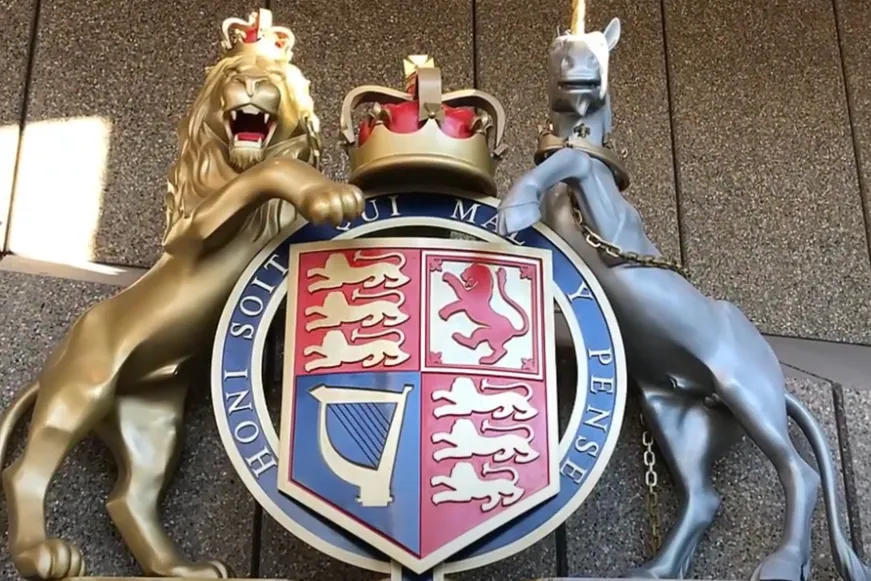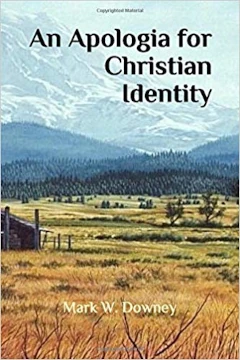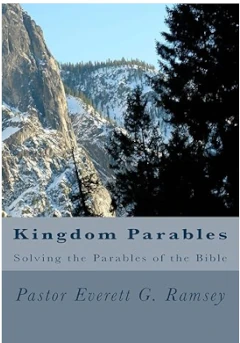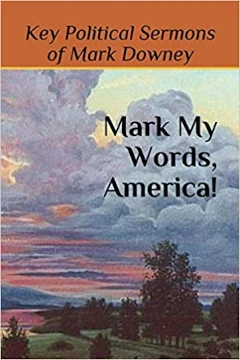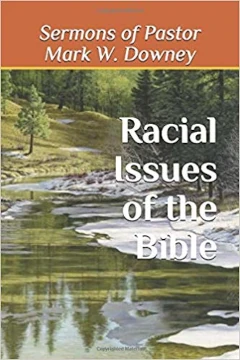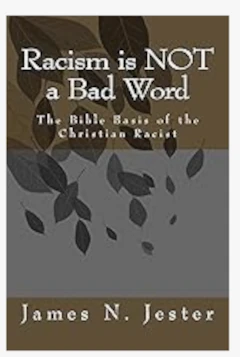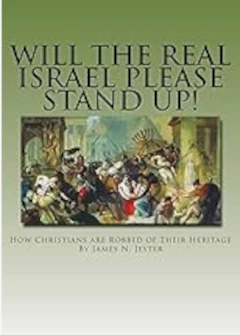OZ: Behind the Curtain Part 2
Copied from the sermon notes of Pastor Don Elmore
March 20, 2016
Scripture Reading: Psalm 83:1-6a
- Keep not thou silence, O God: hold not thy peace, and be not still, O God.
- For, lo, Thine enemies make a tumult: and they that hate Thee have lifted up the head.
- They have taken crafty counsel against Thy people, and consulted against Thy hidden ones.
- They have said, Come, and let us cut them off from being a nation; that the name of Israel may be no more in remembrance.
- For they have consulted together with one consent: they are confederate against Thee:
- The tabernacles of Edom,…(plus nine other nations)
All American horse-racing fans are familiar with the Belmont Stakes Race, the third leg of horse-racing’s Triple Crown:
- The Kentucky Derby
- The Preakness Stakes
- The Belmont Stakes
That race was inaugurated two years after the end of the Civil War in 1867. Millions of people have watched the Belmont Stakes via television, at the Belmont Racetrack, or some have picnicked at Belmont Lake State Park. Belmont Lake State Park is where August Belmont used to live.
Very few of these same race fans or observers have ever heard of who Belmont was. His real name wasn’t even Belmont, it was Schonberg. He changed his name from Schonberg to Belmont, like many Jews do today, when he came to America. For example:
- Stefani Joanne Angelina Germanotta changed to Lady Gaga
- Allen Konisbert to Woody Allen
- Charlie Buchinsky to Charles Bronson
- Frances Gumm to Judy Garland
- Nathan Birnaum to George Burns
- Jacob Cohen to Rodney Dangerfield
- Jerome Silberman to Gene Wilder
- Lawrence Harvey Zeigler to Larry King
- Robert Zimmerman to Bob Dylan
- Tzvi to Howard Stern
- Mileowsky to Benjamin Netanyahu
- Frederick Austerlitz to Fred Astaire
- Jay Greenspan to Jason Alexander
- Jennifer Linn Anastassakis to Jennifer Aniston
- Joseph Lewitz to Jerry Lewis
- Kenneth Gorelitz to Kenny G
- Isadore Demsky to Kirk Douglas
- Chaim Lebowitz to Lorne Greene
- Martha Kostrya to Martha Stewart
- Ralph Lifshitz to Ralph Lauren
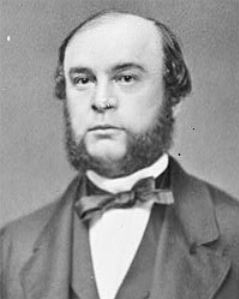 His life followed a similar pattern to his contemporary, Judah Benjamin. I talked about Benjamin in my last sermon (3/6/2016).
His life followed a similar pattern to his contemporary, Judah Benjamin. I talked about Benjamin in my last sermon (3/6/2016).
It was 1492, and both of their ancestors’ families were living in Spain. A few months after Columbus made his famous journey across the Atlantic Ocean, Benjamin’s family fled to England and then later to the West Indies and Schonberg’s fled to Germany as the result of the Spanish Inquisition.
The Roman Catholics gave them one of three choices:
- Convert to Roman Catholicism
- Leave the country
- Be killed
So, the two Jewish families decided on door #2.
Benjamin was born in the West Indies (Virgin Islands) in 1811 and Schonberg in Germany in 1813. Benjamin came to United States when he was very young, first to North Carolina and then eventually in the most populous city of Jewish settlers in the United States at the time--Charleston, South Carolina. He went to Yale University at the age of 14.
Schonberg, when he was seven, lived with his uncle and grandmother in Frankfurt after his mother died. He attended a Jewish school, until he began his first job as an apprentice to the Rothschild banking firm in Frankfurt. He later was given a confidential clerkship in 1832 (when he was 19 years old) and promoted to confidential clerk before traveling later to Naples, Paris and Rome.
When he was 24, Schonberg set sail for Havana, Cuba, charged with the Rothschild’s Cuban interests. On his way to Havana, however, Schonberg stopped in New York City. It was at the very time of the financial recession of the Panic of 1837, right after President Jackson refused to sign for the Rothschild national bank to continue operating in the nation.
Schonberg then remained in New York to supervise the Rothschild financial interest in America, instead of continuing on to Havana. From 1844 to 1850, Belmont was, through Solomon Rothschild’s influence, made the Austrian Consul-General at New York; he then resigned as a protest against Austria’s treatment of the Hungarian revolutionary, Kossuth. (It is noted here that Kossuth was a friend of freemason Lord Palmerston of England).
In 1853, (when he was 40 years old) Belmont became the United States’ representative to the Netherlands, living at Hague for several years. After that, in 1860, (47 years old) he became Chairman of the Democratic National Committee. Altogether it is clear that Belmont had tremendous power in the United States.
He became enormously rich and married the daughter of Commodore Matthew Perry who “opened up” Japan to the western nations. So, we have a Jewish man, whose family fled from the Spanish Inquisition, born in the West Indies, an immigrant to the United States who worked as a Rothschild agent, who lived in Hague as the United States’ representative and who later became chairman of the Democratic Convention in 1860.
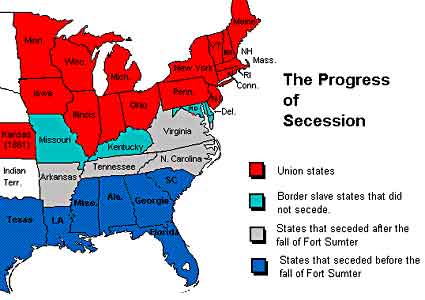 The Rothschild’s had established themselves in both the North and South by the time the War broke out (1861-’65). The South began their secession after the election of President Lincoln.
The Rothschild’s had established themselves in both the North and South by the time the War broke out (1861-’65). The South began their secession after the election of President Lincoln.
This map shows the states that seceded from the Union before the fall of Fort Sumter, South Carolina, those that seceded afterwards, the slave states that did not secede, and the Union states.
Within a few days after Lincoln’s election, the two United States Senators from South Carolina submitted their resignations. On December 20, 1860, by a vote of 169-0, the South Carolina legislature enacted an “ordinance” that “the union now subsisting between South Carolina and other States, under the name of ‘The United States of America,’ is hereby dissolved.”
South Carolina’s action resulted in conventions in other southern states: Mississippi, Florida, Alabama, Georgia, Louisiana, and Texas. They all left the Union by February 1st. On February 4th, delegates from all these states except Texas met in Montgomery, Alabama, to create and staff a government called the Confederate States of America. They elected President Jefferson Davis. How would the North respond?
Little told facts about the North-South War
Little known fact #1: Under what President did most of the states secede from the United States?
Answer: It was not President Lincoln; it was President Buchanan.
For Buchanan was still president after Lincoln’s election, but Lincoln did not take over as president until he was inaugurated on March 4. One month before Lincoln became president, the South already had their President—President Jefferson Davis--and most of the states which would make up their nation; 7 out of 11.
After the battle of Fort Sumter, four more states joined the Confederacy when President Lincoln was president. Four more slave states, however, did not join the Confederacy: Kentucky, Missouri, Maryland and Delaware.
Little known fact #2: One of our church attendees lives in a town in Kentucky named Crittenden. It gained some fame as the town where Survivalist, the television reality show, Roger Bingham, lived. But who was the town named after?
Answer: John Jordan Crittenden. As the Whig Party crumbled in the mid-1850s, Crittenden joined the Know Nothing (or American) Party. After the expiration of his term as Attorney General, he was again elected to the United States Senate, where he urged compromise on the issue of slavery to prevent the breakup of the United States.
As bitter partisanship increased the threat of secession, Crittenden sought out moderates from all parties and formed the Constitutional Union Party, though he refused the party’s nomination for president in the 1860 election.
In December 1860, he authored the Crittenden Compromise, a series of resolutions and constitutional amendments he hoped would avert the Civil War, but Congress would not approve them. As a result of the failure of Congress to approve his proposal to stop the War, Crittenden had one son who fought on both sides of the War.
President Lincoln doesn’t take office until March 4, 1861 and the Confederate States of America had already been in existence for one month. Seven states had already seceded from the Union. When did the War begin?
The War began on April 12, 1861 at Fort Sumter, South Carolina. The first shot was said to be by G. T. P. Beauregard of the Confederacy. Now, who was he?
Little known fact #3: How were four major players in the War Between the States related to one man?
- G. T. P. Beauregard was married to Caroline Deslonde (second marriage, his first wife died in giving birth to one of his children), the daughter of Andre Deslonde and sister-in-law of John Slidell, a Confederate diplomat.
- John Slidell’s daughter was married to Baron Frederic Erlanger, a French Jewish financier based in Paris. Erlanger helped to fund the Confederacy, gouging the South with usurious rates and fees too.
- Judah P. Benjamin (a Rothschild agent) was taken in the law firm of Slidell, Benjamin and Conrad in Louisiana and was nurtured along until he was made a partner.
- August Belmont’s (a Rothschild agent) wife’s uncle was John Slidell the Confederate envoy to France. August Belmont was one the side of the Union, John Slidell was a famous Confederate.
So, we have Slidell’s daughter, sister-in-law, niece and his good friend all married to or are important people in the War Between the States—and August Belmont is on the other side--the North. Two of the four people listed above were Rothschild’s agents, one on each side.]
And what did the Rothschild’s want? They wanted the nation of the United States to split into two nations. The North, after the War, could be annexed to Canada. The Rothschild’s backed both sides, their material interests being on both sides, and their political interests requiring a long war and a stalemate, which could only be produced by giving more help to the South than to the North.
When the War began, the South was victorious in a very decisive way—they probably could have thwarted the Rothschild’s plan by winning the War in a short time. At the beginning of the War, The Battle of Manassas (Bull Run), under General G. T. P. Beauregard, the South could have continued on and taken Washington, D. C., the capital of the North. It was only 30 miles away and had a very small number of soldiers that could defend it. So, the War could have been over very, very soon. Too soon. It was against the Rothschild’s plan.
But the decision was to not continue and capture the Northern Capital city. The Southern newspapers were outraged.
Little known fact #4: Who made that decision?
Answer: The “fall-guy” for this blunder will be War Secretary Leroy Walker. But in reality, it is the ex-war hero, ex-War Secretary and current Confederate President Jefferson Davis who calls the shots, not the young Walker. But it is also known that Davis relies heavily on the advice from the man whose intelligence and gift-of-gab he is awed by–Jewish Attorney General and former Louisiana Senator Judah Benjamin, referred to by his critics as, “Davis’ pet Jew”.
Was it Judah Benjamin, the man so admired by Solomon de Rothschild, who may have whispered poison in Davis’s ear, telling him not to take the District of Columbia and thus blowing the chance to win the war early for the South? And after Walker has been made the scapegoat and fired; who replaces him as War Secretary? None other than Judah Benjamin!
Could the new War Secretary Benjamin’s subsequent 1861 interference with the Generals, --acts so controversial that they would force a Congressional investigation--and his bizarre refusal to supply them as requested have been a ploy designed to prolong the war until Rothschild could bury both sides in debt, before sending the Family’s British and French hit-men to divvy up’ America into two spheres?
Establishment historians will later claim that Benjamin’s stubborn defiance of the Generals was due to a lack of supplies in the South. But given how early it was in the war, the claim that supplies were low seems like a cover story. If “lack of supplies” had been the cause of Benjamin’s decisions, Generals Stonewall Jackson and P. G. T. Beauregard would not have had reason to strongly hate Benjamin as they did.]
England and France were to support the South, but the plan was thwarted by the only major nation that did not have a national bank—Russia. The Tsar knew of the Rothschild involvement and wanted to stop them. Rothschild’s did not forget what Russia did. They took over Russia and killed the entire family of the Tsars in 1918.
Little known fact #5: Who, why, where and when was the Russian Imperial Family murdered in cold blood?
Answer: The murder of the Russian Imperial Family on July 17, 1918 was probably the greatest crime in world history second only to Jewry’s crucifixion of the Lord Jesus Christ nineteen hundred years before. The family of Tsar Nicholas II, his wife Alexandra, and his daughters, Olga, Tatiana, Maria, Anastasia, and his son and heir, Alexei, were pious Orthodox Christians.
But world Jewry, despisers of Christian piety and the Christian monarchy, both financed and instigated the Bolshevik Revolution and the overthrow of the Tsar, and finally, his death and the murder of his entire family. From then on the world has witnessed and felt the decline and disintegration of the family--the core of an ethical and cohesive society.
It was Wall Street Jewish Banker, Jacob Schiff of Kuhn Loeb Bank, who brought Leon Trotsky, born “Lev Bronstein” (another Jewish name change), to New York in February of 1916. Trotsky recruited Russian Jews from the immigrant population of the Lower East Side of Manhattan and trained them as armed revolutionaries.
On March 27th 1917, Schiff sent Trotsky and his group of Jewish communists off to Russia to lead a Marxist Revolution with no less than $20 million dollars in gold, today worth billions. That same month, the Tsar was forced to abdicate and along with his family was placed under house arrest in St Petersburg.
I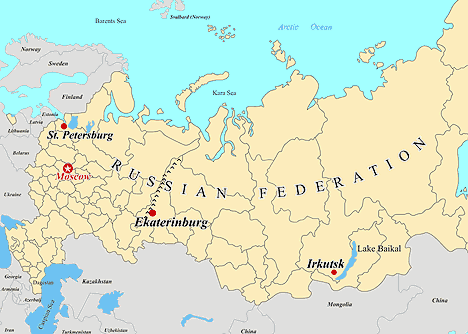 n August of 1917, with the Bolsheviks rising to power, the hatred of Trotsky toward the Tsar reached a fevered pitch and the Imperial Family was moved far from the sympathetic sentiments of the Russian people to Tobolsk in Siberia. In the spring of 1918, the Tsar and his family were taken to Ekaterinburg in the Urals where the Jew Jacob Yurovsky, was given the assignment to imprison, plan, and assassinate the Imperial Family.
n August of 1917, with the Bolsheviks rising to power, the hatred of Trotsky toward the Tsar reached a fevered pitch and the Imperial Family was moved far from the sympathetic sentiments of the Russian people to Tobolsk in Siberia. In the spring of 1918, the Tsar and his family were taken to Ekaterinburg in the Urals where the Jew Jacob Yurovsky, was given the assignment to imprison, plan, and assassinate the Imperial Family.
Yurovsky brought the Tsar and his family to a former house of a wealthy Jewish merchant, now made into a prison for his captives. In prison for over two months, just before midnight on July 17, 1918, the Jew Yurovsky brought the Imperial Family to the basement. They were told that they were going to pose for a group picture. But the Jewish assassins, Yurovsky, Nikulin, Yermakov, Vaganov, were waiting.
Yurovsky then pulled out his revolver and aimed it directly at the Tsar’s head and fired. Tsar Nicholas II died instantly. Next, he shot Tsarina Alexandra as she made the sign of the Cross. Olga, Tatiana, Maria, and Anastasia, were shot next.
As the room became silent there was a low groan. Alexei, the heir to the Tsardom of Russia was still alive. The Jew Yurovsky stepped up and fired two shots into the boy’s ear. All the members of the Tsar’s family were lying on the floor with many wounds in their bodies. The blood was running in streams. The Bolshevik Jews, financed by Jewish Wall Street, achieved their aim: the Imperial family, the Tsardom, and the Romanov dynasty was exterminated.]
So, the Jews murdered in cold blood the family descended from King David of Judah. And they murdered over 66,000,000 other Israelites in the name of Communism in the next decades of rule. Our God must be very angry at the way His children have behaved and are behaving. Most of the people in the United States still do not blame the Jews for this act.
Little known fact #6: Why did the United States buy Alaska from Russia?
Answer: The cession of Alaska was a way to officially recompense Russia for its aid to the United States during the American Civil War (1861 — 1865). So, Alaska was transferred to the United States in 1867 at a cost equal to what it cost Russia to have their navy blocking ports from the English and French--$7.2 million.!
It was called “Seward’s folly” or “Seward’s ice box” at the time. It was for the wrong reason, but turned out to be a very good buy for the United States.
Abraham Lincoln tried to introduce State Loans to free the people of America from the clutches of the bankers. We need not be surprised therefore that August Belmont strongly opposed the nomination and election of Lincoln. Lincoln financed the Civil War on state credit, and for that he was murdered in 1865 by the Jewish actor John Wilkes Booth. This Booth was neither a Southerner nor ever owned a slave.
Little known fact #7; On the night of President Lincoln’s assassination, who else was targeted for assassination?
Answer: An attempt to murder the Secretary of State, William Seward was made the same evening as Lincoln’s assassination; Seward was the man who gave the invitation to the Russian fleet. There was an attempt to shoot him while he was lying in bed after suffering an injury in a carriage accident. When the pistol failed to operate, the assailant took out his knife and began to slice Seward and his family who were around him. The assailant injured several people, but failed to kill Seward.
An attempt against the Tsar was made in Paris in the following year and in 1881 he was blown to pieces by a bomb. Lincoln, Seward and the Tsar were the three people who had chiefly prevented the Jewish partition of the United States! Two were assassinated and one was knifed badly, but survived.
When states began to secede in December 1860, beginning with South Carolina; Belmont wrote personally to each Southern governor asking them to keep their states in the Union and warning that secession “must end in disaster for the South.” When New York’s Mayor Fernando Wood floated the idea of the city also breaking off from the United States and becoming a wealthy “Free City,” Belmont responded that as an immigrant, what he wanted for his children was not the gilded prospect of New York merchant princes but the more enviable title of American citizens.
When Fort Sumter was attacked in April 1861, Belmont abandoned peace making. Although he had led the opposition to Lincoln’s election, he now rallied Democrats to support the Republican war effort. Belmont would soon become the nation’s principal War Democrat, insisting that his party support Lincoln’s effort to suppress the rebellion.
In the early weeks of the conflict, Belmont funneled his own money to the largely-Republican German immigrant community in Missouri to help them form military units to keep their state from joining the Confederacy. In New York he helped fund the organization of Colonel Blenker’s German First New York Rifles. He even presented the regiment with its new battle flags in a public mass meeting.
Belmont used his position to pressure the Rothschild’s not to loan money to the Confederacy. He employed his European connections to gather intelligence for the Lincoln Administration. He also lobbied English Members of Parliament on behalf of the Union, urging them not to support what he called the “pro-slavery oligarchy” ruling the South.
Belmont’s next fight was to try to organize a loyal opposition party. The Democrats had lost nearly half of their members when the Confederacy was formed. The remaining Northern Democrats split into two factions, the War Democrats led by Belmont and others, and the Peace Democrats, or Copperheads. The Peace Democrats blamed the abolitionists for the war and called for an immediate cessation of all military actions against the South, even though this would have resulted in a disunited country. Belmont would describe these days as the “most disastrous epoch in the annals of the Democratic Party.”
WAR DEMOCRATS VERSES PEACE DEMOCRATS
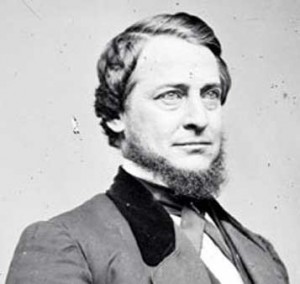 Little known fact #8: Who was the inspiration for Edward Everett Hale’s short story “The Man Without a Country”?
Little known fact #8: Who was the inspiration for Edward Everett Hale’s short story “The Man Without a Country”?
Answer: Clement L. Vallandigham. The Man without a Country” begins with the narrator, Captain Frederic Ingham, under whose name the story was published, pointing out an obituary notice in the August 18, 1863, edition of the New York Herald. It reports the death at sea of one Philip Nolan. Who is this Philip Nolan?
The fictional Nolan’s troubles begin when he falls under the sway of Aaron Burr. In 1806, the adventurer-politician Burr had just sailed down the Mississippi for the second time to recruit allies for a plan to claim land west of the river for the United States. It didn’t bother him that federal law prohibited such freebooting campaigns. Burr’s many enemies and critics — he’d recently killed Alexander Hamilton in a famous duel—also spread rumors that the one-time vice president intended to found an independent area in the western part of North America.
Nolan, patriotic and brave, was no match for Burr. When Burr is caught and tried for treason the following year, Nolan is swept up in the indictment and faces a military tribunal as co-conspirator. During the trial a greybeard judge and Revolutionary War vet named Colonel Morgan asks Nolan to make a statement to counter the evidence against him and prove his loyalty to the nation.
In a “fit of frenzy” the hotheaded Nolan issues a cry from Clement Vallandigham’s campaign oratory: “Damn the United States! I wish I may never hear of the United States again!”
The military court is stunned into a lingering silence. Upon regaining his composure, the old judge sentences Nolan to have his wish granted. Declares Morgan, “The Court decides, subject to the approval of the President, that you never hear the name of the United States again.”
Nolan laughs at the sentence, but his levity is brief. He is immediately whisked away by armed guards, to the first of many United States’ Navy warships roaming the world’s seas. Upon these ships he spends the rest of his life in floating purgatory, a punishment personally approved by Thomas Jefferson.
For the length of his sentence, Nolan is forbidden from so much as hearing the name of the United States or seeing the words in writing. His shipmates are prohibited from sharing any news regarding the country’s politics and rapid development. Writes Hale, “For that half-century and more, he was a man without a country.”
That short story was one that I read in high school and I still remember it. It was fiction; but what I didn’t know or was even told is that it is based on Clement Vallandigham. I never even heard of this man. Who was he?
Vallandigham was a leader of the Peace Democrats. He was an Ohio politician who voted against every war measure proposed by the Lincoln administration. He used the harshest language against the president, saying that Lincoln presided over “one of the worst despotisms on earth.” When the Emancipation Proclamation was issued at the beginning of 1863 and the Draft was introduced soon thereafter, Vallandigham charged that Lincoln was freeing blacks and enslaving whites. He became an outspoken supporter of resistance to the Draft.
Little known fact #9: Clement L. Vallandigham violated and was punished by what General Order that was unconstitutional?
Answer: Union General Ambrose E. Burnside (the man whom the side burn was named after) issued General Order Number 38, which stated that in Ohio any sympathy for the enemy would not be tolerated.
While the Civil War was going on the population of Dayton, Ohio decided they didn’t want Vallandigham in 1862. This was primarily due to Vallandigham’s staunch support of Constitutional State’s Rights. He believed states had the right to secede, and that the Union government had no constitutional right to regulate the legal institution of slavery, nor use military force to subdue the Confederacy. Vallandigham was the leader to the Copperheads and created their slogan “To maintain the Constitution as it is, and to restore the Union as it was.”
Vallandigham gave a speech charging that the Civil War was being fought not to save the Union but to free slaves, he denounced the war and called for President Abraham Lincoln to be removed on May 1, 1863. Four days later he was arrested.
Vallandigham was tried in military court in Cincinnati, Ohio on May 7, 1863 and sentenced to 2 years of prison. Instead of being sent to prison, Lincoln ordered him sent to the Confederacy under military guard. After crossing over in Tennessee to the Confederacy, Vallandigham took a blockade runner to Bermuda, and then a ship to Canada. Once in Canada he declared his candidacy for Governor of the State of Ohio. Ohio Democrats nominated him by a vote of 411 to 11, and Vallandigham set up a campaign office in Windsor, Ontario, Canada. He lost.
Little known fact #10: What State did the Ohio Democrats want to secede from the Union in the middle of the War Between the States?
Answer: Vallandigham’s campaign platform was for the State of Ohio to secede from the Union. He lost the race in 1863, but in 1864 Vallandigham appeared at the 1864 Democratic National Convention in Chicago. Vallandigham wrote the “peace plank” for the convention and was included on the ticket as the Secretary of War.
A majority of the Peace Democrats supported a war to save the Union, but a strong and active minority asserted that the Republicans had provoked the South into secession and that the Republicans were waging the war in order to:
- Establish their own dominion
- Suppress civil and states’ rights
- Impose “racial equality”
They believed that military means had failed and would never restore the Union. They sounded like they were talking about the freemasons, not the Republicans.
Peace Democrats were most numerous in the Midwest, a region that traditionally distrusted the Northeast, where the Republican Party was strongest, and that had economic and cultural ties with the South. The Lincoln administration’s arbitrary treatment of dissenters caused great bitterness there. Anti-abolitionist Midwesterners feared that emancipation would result in a great migration of freed slaves into their states.
The influence of the Peace Democrats varied with the fortunes of the war. When things went badly for the Union on the battlefield–-which was certainly true in 1862 and early 1863–-large numbers were willing to make peace with the Confederacy. When things for the North went well on the battlefield, Peace Democrats were dismissed as defeatists.
However, the Democratic candidate, former Major General George B. McClellan, repudiated the Peace Democrats’ platform, and Union victories on the battlefield in 1864, as well as support from the common soldiers voting in the field for the Lincoln administration, assured Lincoln’s re-election.
CONCLUSION
Edom heads the list of Israel’s enemies in Psalm 83. From the days of Esau himself, a burning hatred of Israel has been nourished among the Edomites. God says through the prophet Amos, in Amos 1:11:
“Thus said the LORD: For three transgressions of Edom, and for four, I will not turn away the punishment thereof; because he did pursue his brother with the sword, and did cast off all pity, and his anger did tear perpetually, and he kept his wrath forever.”
How long would Edom keep his anger against Israel? If any people would form and lead a confederacy against the Israelites, it would be Edom.
As the man Esau matured, married, and had children, he made critical alliances with surrounding peoples, recorded in Genesis 36. In writing this book of beginnings, Moses took the effort to include an entire chapter on the Edomites alone. He was careful to include specific details about who was born to whom and who ruled this or that area. In addition, he reminds the reader several times of his subject:
- Verse 1: “Now these are the generations of Esau, who is Edom.”
- Verse 8: “Esau is Edom.”
- Verse 19: “. . . Esau, who is Edom. . . .”
- Verse 43: “Esau the father of the Edomites.”
When God repeats Himself, He is usually trying to convey an important matter. He is reminding Israel not to forget that the Edomites have their source in Esau. To deal with them correctly, the Israelites would have to know who the Edomites were and be prepared for their predictable and incessant attacks—and consciously or not, the Edomites have never stopped trying to win back what Esau lost to Jacob! Further, we today will readily recognize them by the biblical clues recorded about their forefather.
In introducing the family of Esau, Moses includes the names and derivations of Esau’s wives:
Geneses 36:2-3:
- Esau took his wives of the daughters of Canaan: Adah the daughter of Elon the Hittite; Aholibamah the daughter of Anah, the daughter of Zibeon the Hivite;
- And Basemath, Ishmael’s daughter, sister of Nebajoth.
Esau bound himself by marriage to the Hittites, the Hivites—both Canaanite tribes—and the Ishmaelites.
The Hittites, descended from Heth, son of Canaan, were, by far, the strongest and biggest of these tribes, possessing a huge empire that stretched from Asia Minor to Palestine, with its capital in what is today central Turkey. The Hivites were a related but less numerous people living in the land of Canaan.
It is now clear how close the ties were between the Edomites, the Hittites, the Hivites, and the Ishmaelites. They were all related by marriage and blood!
We find another blood-connection in Genesis 36:11-12:
11) “And the sons of Eliphaz were Teman, Omar, Zepho, Gatam, and Kenaz.
12) And Timna was concubine of Eliphaz, Esau's son, and she bare to Eliphaz Amalek: these were the sons of Adah Esau’s wife.”
The Amalekites, descended from Amalek, a grandson of Esau, fall naturally into the anti-Israel alliance. Verse 16 mentions that Amalek became a duke (chief) among the Edomites. Although the son of a concubine, he nonetheless became head of a significant tribe, which in later times distinguished itself as a ruthless enemy of Israel.
Notice, too, that Teman, since he is listed first, is probably the firstborn son of Eliphaz, who is the firstborn son of Esau. Teman's name became attached to the central part of Edomite territory, where he and his clan eventually settled.
Today, these 10 nations listed in Psalm 83 as the enemy of the Covenant People of God, inhabit the nations of Lebanon, Syria, Turkey, Iraq, Saudi Arabia, Yemen, United Arab Emirates, Jordan, Egypt, Libya, Sudan, Morocco, Tunisia, etc., and the pseudo-nation of Palestine --IsraeLie. And they live in practically all countries of the earth in this multi-cultural world we now live in. To put it into modern language, the Jew is the head of this Confederation.
The Jew has been putting in place the plan hatched out by Adam Weishaupt in 1789. Albert Pike predicted three world wars, the third one is about to start.
Who are we going to follow? Will we take Psalm 83 at its face value? Will we be like Clement Vallandigham who tried to help save his nation? Clement would have been wiser if he would have exposed August Belmont and Judah Benjamin as being long-time enemies of the Anglo-Saxon Scandinavian people. Once the Israelites learn of their betrayal, they will begin to repent and seek after their God.
This week President Obama nominated a man for the Supreme Court. The eight members of the Court now are either Roman Catholics or Jews. Who do you think he nominated? He nominated Merrick Garland, a Jew.
Garland told reporters in the Rose Garden, “My grandparents left the Pale of Settlement (southern Russia)…in the early 1900’s, fleeing anti-Semitism and hoping to make a better life for their children in America.” Mr. Garland was raised in a Talmudic community in Chicago by Judaic parents. His mother, Shirley (Horowitz), worked as director of services at Chicago’s “Council for Jewish Elderly.” His father, Cyril Garland, an advertising executive, is deceased. Garland’s wife, Lynn Rosenman, is Judaic royalty. She is the grand-daughter of the late Russian-American attorney and political king-maker, Samuel I. Rosenman, who served in the White House as Special Counsel to President Franklin D. Roosevelt, after promoting FDR’s early political career in New York.
This anti-gun, former prosecutor of Timmy McVeigh is just a symptom. He hates Israel. There should not be a Jew in the United States, let alone on our Supreme Court.
They are haters of our God; they have taken crafty counsel against us and they desire to cut us off as a nation. The blood of our Savior is on them. Don’t be silent LORD is our prayer.
Blessed be the LORD God of Israel.


